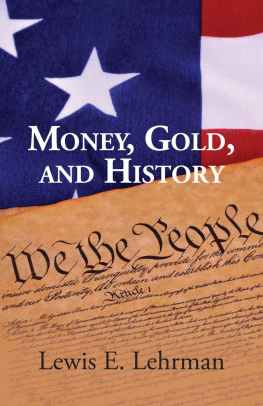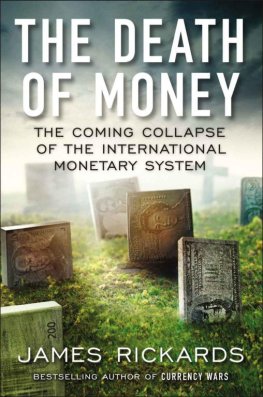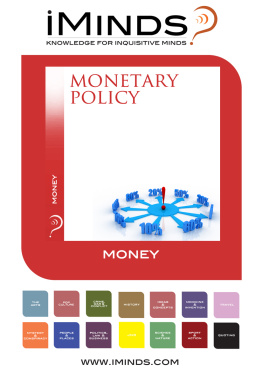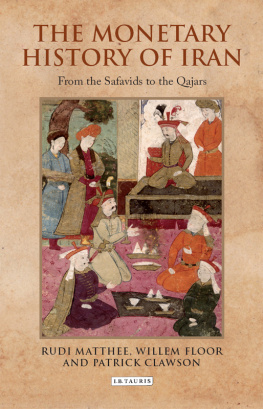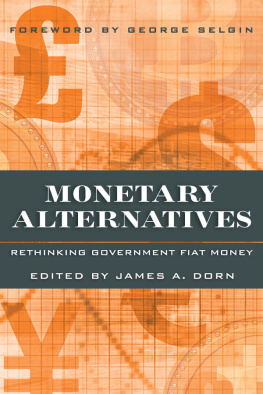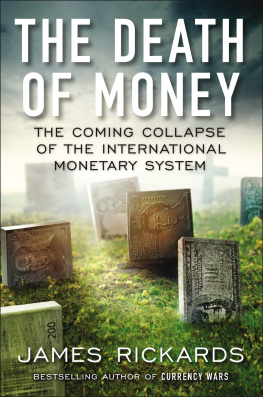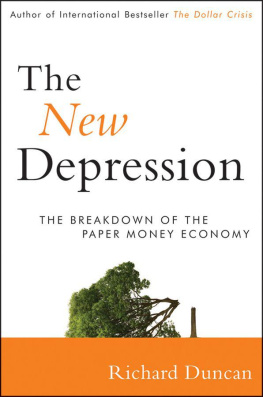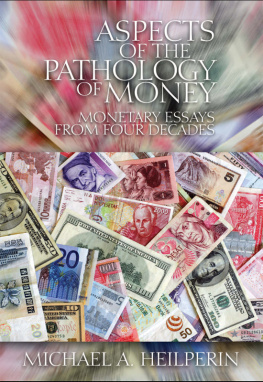Money, Gold, and History
Lewis E. Lehrman
2013 Lewis E. Lehrman
All rights reserved. Not to be distributed or reproduced without consent.
Published by The Lehrman Institute
www.LehrmanInstitute.org
Printed in the United States
First Edition
For more information about the author, Lewis E. Lehrman, or the work of The Lehrman Institute, please visit www.LehrmanInstitute.org.
To keep abreast of the latest on The True Gold Standard: A Monetary Reform Plan without Official Reserve Currencies , please visit www.TheGoldStandardNow.org where additional information, breaking news, history, and research on monetary policy, economics, and the gold standard may be found.
In honor of:
Paul Fabra
In memory of:
John P. Britton (1938-2010)
Barton M. Biggs (1932-2012)
Jacques Rueff (1896-1978)
Article I, Section 8.
The Congress shall have Power... To coin Money, regulate the Value thereof, and of foreign Coin, and fix the Standard of Weights and Measures.
Article I, Section 10.
No State shall emit Bills of Credit; make any Thing but gold and silver Coin a Tender in Payment of Debtsor grant any Title of Nobility.
United States Constitution
Preface and Dedication
Paul Fabra was born in Paris in 1927. I first met him, I believe, in 1972 in Paris at the home of Professor Jacques Rueff, 51 rue de Varenne. He was then the world famous senior financial writer for Frances most prestigious newspaper, Le Monde . He remains one of the most distinguished financial commentators of France. During the past forty years, he and I forged an irreplaceable personal friendship. His intellectual influence on my writing endures. I dedicate this book to him, because without him, modest as this book is, it would be the lesser.
Paul Fabra is a philosopher-economist, a distinguished author, a peerless journalist, supremely well educated, a linguist, a man of the world. Above all, Paul Fabra is a devoted husband and father, a patient teacher, a gentleman, and a gentle man I cherish him and our priceless friendship.
Lewis E. Lehrman
Paris, December 15, 2012
Selective Chronology
1789 Alexander Hamilton becomes Secretary of the Treasury
1791 First Bank of the United States created by Congress
1792 Mint and Coinage Act gold and silver dollar by law
1816 Second Bank of the United States created by Congress
1861 Civil War Suspension of Convertibility (1862)
1862 Greenbacks legislation passes
1875 Resumption Act passed requiring resumption of specie convertibility in 1879
1879-1914 Period of Classical Gold Standard
1913 Federal Reserve created by Congress to uphold the Gold Standard while making currency more elastic
1914 World War I suspension of convertibility among the belligerents
1917 United States enters the War
1918 World War I ends
1922 Genoa Monetary Conference establishment of official reserve currencies the British pound and the U.S. dollar
1925 Worldwide central bank credit expansion
1929 Stock Market crash
1929-41 Great Depression
1931 Collapse of reserve currency system, devaluation sterling pound
1930 Smoot-Hawley Tariff legislation passed
1933 Suspension of U.S. convertibility expropriation of privately held gold
1933 President Roosevelt issues Executive Order 6102 forbidding ownership of gold coins, bullion, and gold certificates
1934 Marriner S. Eccles becomes chairman of the Federal Reserve
1934 Dollar redefined from twenty dollars per ounce of gold to thirty-five dollars per ounce convertible only for foreigners
1934 Roosevelt administration revalues gold from $20.67 to $35
1944 Bretton Woods Agreement
1944 Dollar becomes the world reserve currency after World War II
1948 Thomas B. McCabe becomes chairman of the Federal Reserve
1951 William McChesney Martin, Jr. becomes chairman of the Federal Reserve
1959 Europe reestablishes currency convertibility on current account
1960 Dollar crises begin and recur
1970 Arthur F. Burns becomes chairman of the Federal Reserve
1971 President Nixon closes the gold window
1973 Floating-pegged exchange rates based on the world dollar standard followed by the Great Inflation
1974 Repeal of prohibition of private ownership of gold coins, bars, and certificates
1979 Paul A. Volcker becomes chairman of the Federal Reserve
1981-82 U.S. Gold Commission meets amidst highest interest rates in American history. Restoration of dollar convertibility to gold debated rejected
1987 Alan Greenspan becomes chairman of the Federal Reserve
2006 Ben S. Bernanke becomes chairman of the Federal Reserve
2007-09 Great Recession
2008-12 Era of quantitative easing (or money printing)
Fiat Money Periods in the United States (inconvertible paper money)
Revolutionary War (1776-1792); War of 1812 (1812-1817)
Civil War and Reconstruction (1862-1879); 1971 to the present
Gold/Silver Standard Periods in the United States
1792-1812; 1817-1834; 1834-1861; 1879-1971
The dollar, and other key currencies, must be defined in law as a weight unit of gold at a statutory convertibility rate which insures that nominal wage rates do not fall.
Introduction
The problems which affect the American economy are not new. Sadly, they are far too familiar and very predictable. Almost four decades ago, during Americas worst economic period since the Great Depression, this is what I wrote in the first edition of the book, Money and the Coming World Order (1976):
Today, national economic policy making is largely concerned with the problems of unemployment and inflation. More precisely, it is their simultaneous combination in nearly all Western economies which preoccupies policy makers. As these problems grow worse, the stakes rise higher. We know that either severe unemployment or sustained inflation, let alone both together, can be expected to have the most serious consequences for liberal democracy.
During the post-war era, some had imagined the issue of widespread unemployment resolved by Lord Keynes who, forty years ago in the midst of a world depression, prescribed activist fiscal and monetary policies: It may be possible, he wrote in The General Theory , by a right analysis of the problem [of unemployment], to cure the disease whilst preserving the efficiency of freedom. Surely, it is a proper and compassionate national goal to try to eliminate large-scale unemployment if it develops during the declining phase of the business cycle. But whether ever active monetary and fiscal full-employment policies, during all phases of the business cycle, are compatible with a reasonable degree of economic stability, let alone efficiency and freedom, has become a major question of our times. In fact, recurring interventionist government economic policies, in themselves, appear to be unmistakable causes of the intensifying disorders which increasingly characterize the age.
Until recently, at least, the principal ailment of post-war Western economies has not been unemployment, but inflation. Indeed, if the post-war era in the liberal democracies can be accurately described as the age of Keynes, it is also the age of inflation. Inflation plagues all Western economies, even now [1973-1975] in the midst of recession and unemployment. Everywhere the value of money deteriorates. The burden of debt, public and private, mounts ever higher. Money, it seems, serves less well as a reliable store of value and the means of payment. In a worldwide exchange economy, money no longer impartially mediates between limited resources and rising expectations. Instead, political power, either of governments or of private corporations and trade unions, more and more shapes and supplants the market economy. Some Western nations thus move closer to civil war.

